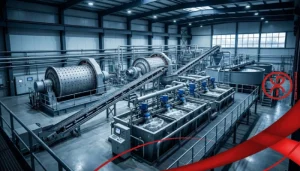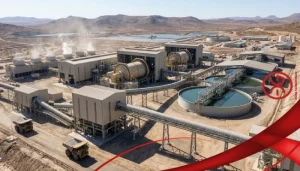Ball mills are one of the most widely used pieces of equipment in grinding processes across industries such as mining, cement production, and ceramics manufacturing. These machines rely on balls made from various materials like steel or ceramics to grind materials into finer particles. The choice of milling balls significantly impacts the efficiency, quality, and cost of the milling process. Selecting the appropriate type of milling balls, whether steel or ceramic, is crucial for ensuring optimal performance, enhancing milling efficiency, and minimizing operational costs.
The advantages of ball mill balls are clear when considering their role in achieving high precision in grinding materials such as ores, chemicals, and even pharmaceuticals. With various sizes, shapes, and compositions available, milling balls are tailored to meet the specific needs of different grinding tasks. From increasing output to reducing wear and tear on the milling machine, ball mill balls are integral components for industries that require fine powder processing.
In this article, we will delve deeper into the uses, advantages, and key considerations associated with ball mill balls, providing insights that help in selecting the best-suited material for your grinding needs. We will also explore the importance of understanding the factors that influence the choice of milling balls, ultimately assisting businesses in making informed decisions.
Types of Milling Balls and Their Uses
Milling balls come in various types, and the selection depends on the specific application, desired granularity, and the material being processed. The most common types of balls used for milling include steel balls, ceramic balls, and grinding media balls, each offering distinct advantages for particular applications.
- Steel Balls: Steel balls are the most commonly used balls for milling due to their durability and high density. They are ideal for grinding heavier materials such as ores and metals, making them a preferred choice in the mining industry. Steel balls come in various sizes and are widely used for bulk processing, where cost-effectiveness is a priority. The density of steel balls also allows for efficient grinding, making them suitable for many milling tasks, particularly in mineral processing.
- Ceramic Balls: Ceramic balls are primarily chosen for their hardness and resistance to wear. They are made from materials like alumina, zirconia, or silicon nitride, which provide high resistance to corrosion and chemical reactions. Ceramic balls are often used in industries where contamination must be minimized, such as pharmaceutical and food manufacturing. The chemical inertness of ceramic balls ensures that they do not introduce impurities into the materials being milled, making them ideal for high-purity milling tasks.
- Grinding Media Balls: Grinding media balls are often made from high-chromium steel, known for its hardness and grinding efficacy. These balls are commonly used in the grinding of cement, minerals, and ores, where the goal is to achieve fine particles quickly and efficiently. High-chromium grinding media balls are suitable for operations requiring high wear resistance and durability, though they tend to be more expensive than steel balls.
Advantages of Ball Mill Ballsv
The use of ball mill balls offers numerous benefits, especially in industries that rely heavily on efficient grinding and processing of raw materials. Below, we’ll explore the primary advantages of ball mill balls in detail.
- Produces Fine Powder (Particle Size ≤ 10 Microns): One of the most significant advantages of ball mill balls is their ability to produce extremely fine powders. The grinding action of the balls breaks down materials into particles as fine as 10 microns or even smaller. This feature is crucial for industries like pharmaceuticals, where fine particle size is necessary for the desired efficacy of active ingredients.
- Suitable for Milling Toxic Materials: Ball mills can be enclosed, which makes them ideal for milling toxic materials or materials that pose a safety risk. The enclosed nature of the ball mill ensures that harmful substances are contained, protecting both the operator and the environment. This advantage is particularly beneficial in chemical manufacturing and pharmaceutical industries.
- Wide Range of Applications: The versatility of ball mill balls extends across a wide range of applications. From grinding minerals to processing chemicals and ceramics, ball mills are used in various industries. Whether it’s dry or wet grinding, ball mill balls can handle a variety of substances, making them an indispensable tool in manufacturing.
- Continuous Operation: Ball mills are designed for continuous operation, meaning they can run for extended periods without requiring frequent shutdowns. This continuous operation ensures that milling processes are efficient and time-saving, particularly in large-scale manufacturing setups.
- Handling Abrasive Materials: Ball mill balls are also ideal for milling abrasive materials. Their hardness and durability make them capable of grinding tough materials like ores and metals without wear out quickly. This feature enhances their longevity, reducing the frequency of replacements and ensuring long-term operation.
- Improved Efficiency: The rotation and force applied to the milling balls help achieve high efficiency in grinding processes. By optimizing the interaction between balls and the material, milling efficiency is maximized, leading to quicker processing times and better results.
- Customized Milling Power: Ball mills come with customizable power supply options, which can be adapted to meet the needs of different applications. Whether it’s 110V, 220V, or 380V, this flexibility ensures that ball mills can be used in various geographic locations without any issues.
- Minimal Noise and Vibration: A special gear design is used in modern ball mills to reduce noise and vibration, making the milling process smoother and more environmentally friendly. This design improvement enhances the overall working environment, especially in industries where excessive noise and vibrations could be problematic.
- Safety Mechanism: Ball mills are equipped with safety mechanisms that protect operators from potential hazards. This includes features like automatic shut-off in case of malfunction, ensuring that the equipment operates safely throughout its life cycle.
- Programmable Milling Segments: Ball mills come with programmable milling segments that allow operators to adjust parameters such as speed, feed rate, and milling time to suit specific tasks. This feature enhances the control and precision of the grinding process, making it adaptable to different production requirements.
Key Considerations When Selecting Milling Balls
When choosing milling balls, several factors should be taken into consideration to ensure the highest efficiency and the best possible outcome for the milling process. Some of the key factors to consider include:
- Material Composition: The material of the milling balls determines how well they perform and the type of materials they are suited to grind. Steel balls are ideal for general-purpose milling, while ceramic balls are preferred for more delicate tasks where contamination must be avoided.
- Size and Shape: The size and shape of milling balls play a crucial role in determining the grinding efficiency. Smaller balls are better for achieving finer particles, while larger balls are more effective for coarse grinding. The spherical shape of the balls ensures an even grinding action, but the optimal size and shape will depend on the material being processed.
- Hardness and Density: The hardness and density of the milling balls affect their wear rate and grinding efficiency. Harder and denser balls last longer and provide more consistent results. However, excessively hard balls may cause damage to the material being ground, so it is important to choose balls that match the material’s hardness.
- Cost-Effectiveness: Cost is always a critical consideration when selecting milling balls. Steel balls tend to be more affordable initially but may need to be replaced more frequently. Ceramic balls, while more expensive upfront, offer greater durability and may be more cost-effective in the long term.
Conclusion
In conclusion, the advantages of ball mill balls are numerous and varied, making them essential components in grinding operations across a wide range of industries. Whether you are grinding metals, minerals, or pharmaceuticals, the right selection of milling balls can significantly enhance efficiency, reduce costs, and improve product quality. With factors like material composition, size, hardness, and cost-effectiveness all playing key roles, choosing the correct milling balls is crucial for achieving the best results in your operations.
For more information about ball mill balls and their applications, please contact Alpha Grinding Media for expert guidance and product details. They offer tailored solutions to meet your milling needs.
Frequently Asked Questions
What sizes are available for milling balls?
Milling balls are produced in various sizes, typically ranging from half an inch to several inches in diameter. The size of the balls depends on the specific application and the material being processed.
Can milling balls be recycled?
Yes, milling balls can be recycled. Steel balls can be melted and remolded into new ones. However, recycling ceramic balls is more difficult due to their higher melting points.
Why should I choose ceramic balls for milling?
Ceramic balls are ideal for applications where purity is crucial, as they are chemically inert and resistant to wear. They are particularly useful when milling corrosive or reactive substances.
What are the benefits of using steel balls in milling?
Steel balls are cost-effective and durable, making them suitable for general-purpose milling. Their high density makes them efficient at grinding heavier materials such as ores and metals.





